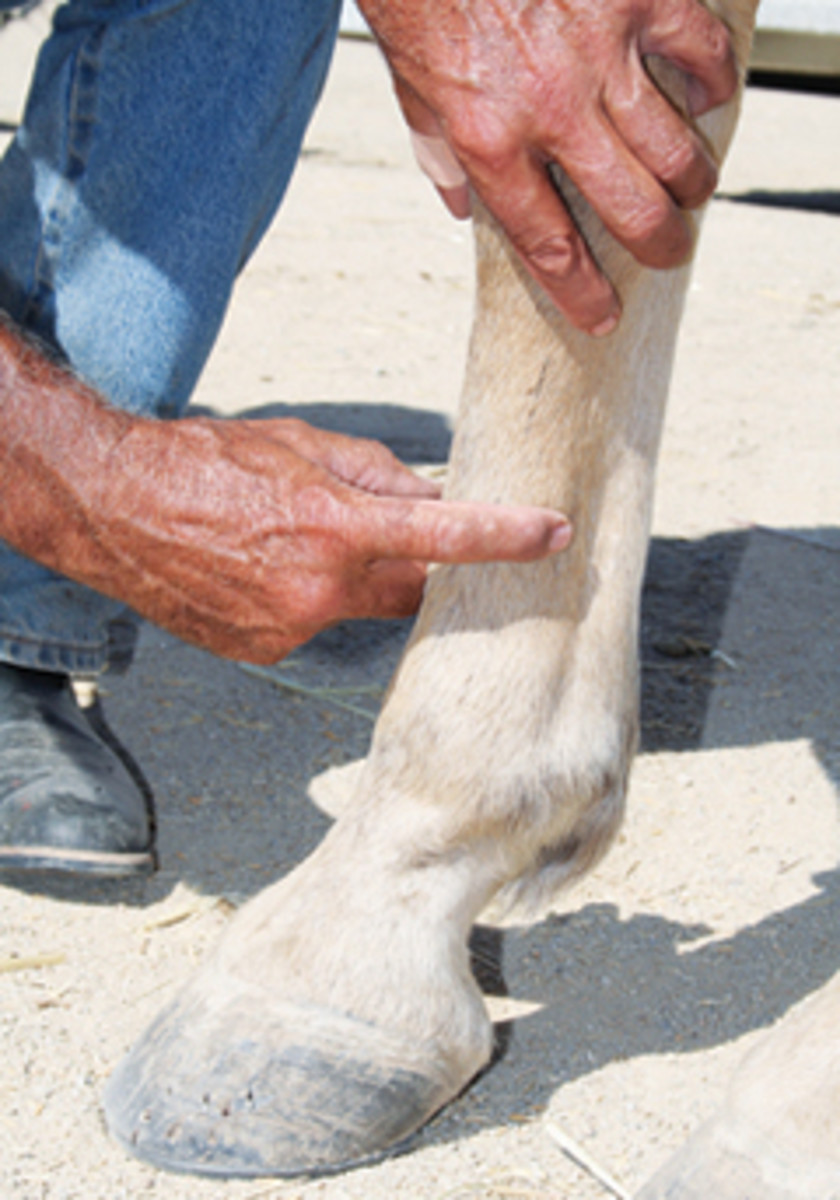
Horse splints are one of the first things some people look for when they check out a horse’s legs, though the significance of horse splints really varies. A horse’s splint bones actually date back to the ancient days when horses had five toes. The evolutionary process eventually narrowed that down to one toe, the hoof, which would be like a person ending up with only a middle finger. The actual splint bones in a horse would be like the remnants of the fingers on either side of the middle one, and running down each side of it.
The splint bones are attached to the cannon bone by a ligamentous structure until a horse is around 5 years old. Sometimes, stress causes that ligamentous structure to tear and therefore bleed a little. The natural healing process in a horse causes the area to calcify and become a bony scar. Basically, the weak spot gets welded with bone.
A typical splint is about the size of an almond. It can appear on either side of the cannon bone (splint bones run down both sides of the cannon bone), though most splints show up on the medial or inside position, simply because more injuries occur in that area. Like I said before, a splint is what’s left after a tear in the ligament that attaches the splint bone to the cannon bone heals.
The ligamentous structure that connects the cannon bone and splint bones calcifies with age, usually at around five years of age. The development and appearance of new splints is rare in older horses.
The good news is that most splints are merely cosmetic, and don’t actually cause a horse to get sore. If a young horse pops a splint, he should be rested from rigorous physical activities. Running cold water on the affected leg, and proper supportive bandaging are appropriate and helpful in minimizing the eventual size of the splint. It’s wise to seek professional help when it comes to proper bandaging, if you aren’t an expert at it, as improper bandaging can do more harm than good in many circumstances.
Some young horses that pop splints become unsound when the initial injury occurs. But I’ve noticed over the years that it’s more common that the sight of the splint is your first clue that an injury of this type has occurred. Many horse owners don’t know exactly what happened or when, and these incidents often happen long before a colt ever gets broke in the first place; playing out in the pasture, for example.
When you do run into more serious problems with splints is in the case of an actual splint-bone fracture. Even though the splint bones don’t have a weight-bearing role, if the fractured bone moves and gets out of alignment, you have potential problems. This is because the misaligned bone can cause serious irritation to the soft-tissue structures in the area.
The suspensory ligament is typically the soft-tissue structure most affected or damaged, though occasionally the flexor tendons can also be injured. A broken or fractured splint bone also causes more swelling than a simple splint calcification, and it typically takes X-rays to make a definitive diagnosis.
To prevent injury to the suspensory ligament, surgical removal of such splint fragments is indicated in cases when the fracture is in the lower two-thirds of the splint bone and displacement occurs. Such a splint injury can be career-threatening to an equine athlete, though again, the good news is that most splints don’t and won’t affect a performance horse’s ability to do his job.










